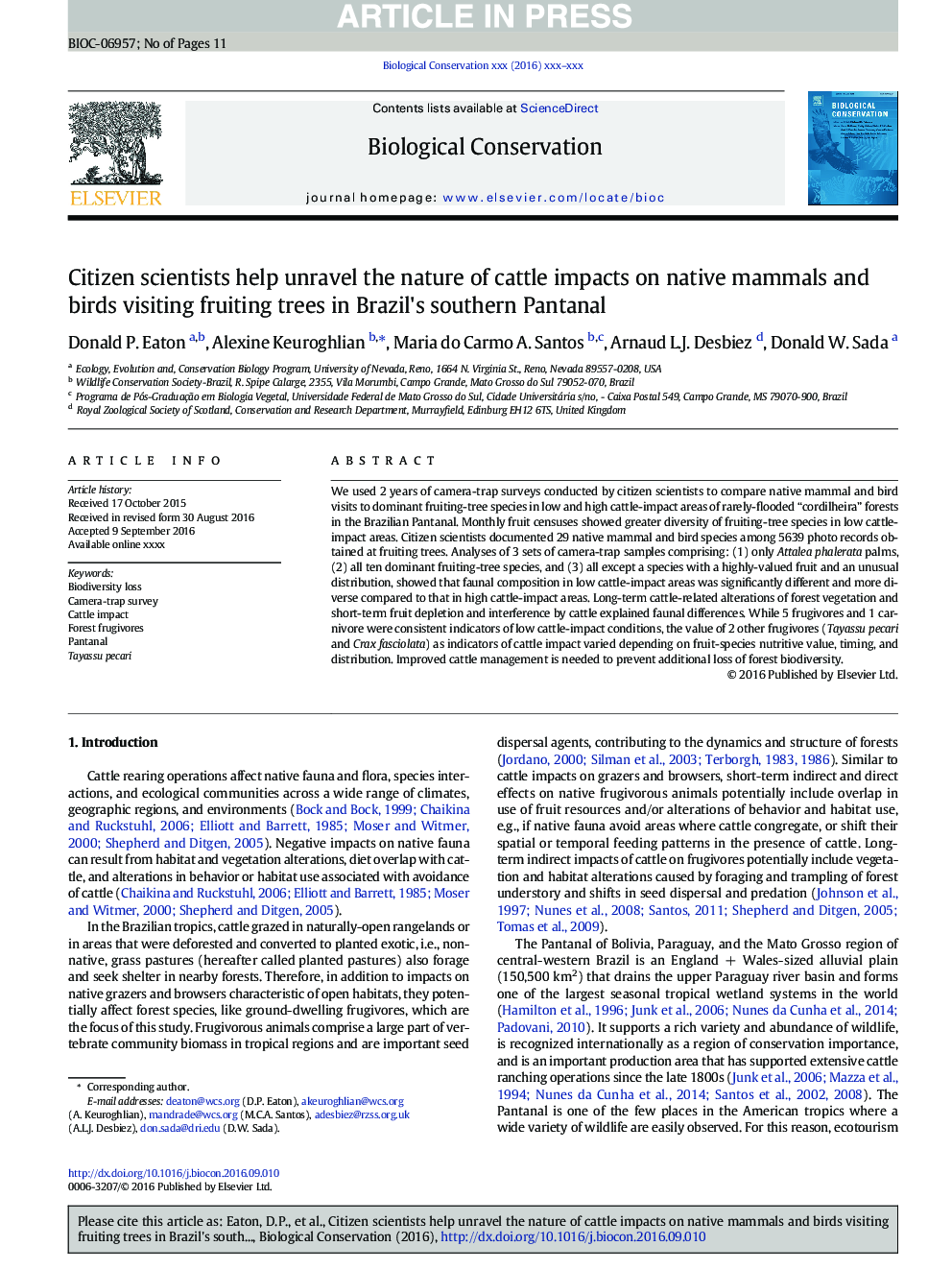| Article ID | Journal | Published Year | Pages | File Type |
|---|---|---|---|---|
| 5743174 | Biological Conservation | 2017 | 11 Pages |
Abstract
We used 2Â years of camera-trap surveys conducted by citizen scientists to compare native mammal and bird visits to dominant fruiting-tree species in low and high cattle-impact areas of rarely-flooded “cordilheira” forests in the Brazilian Pantanal. Monthly fruit censuses showed greater diversity of fruiting-tree species in low cattle-impact areas. Citizen scientists documented 29 native mammal and bird species among 5639 photo records obtained at fruiting trees. Analyses of 3 sets of camera-trap samples comprising: (1) only Attalea phalerata palms, (2) all ten dominant fruiting-tree species, and (3) all except a species with a highly-valued fruit and an unusual distribution, showed that faunal composition in low cattle-impact areas was significantly different and more diverse compared to that in high cattle-impact areas. Long-term cattle-related alterations of forest vegetation and short-term fruit depletion and interference by cattle explained faunal differences. While 5 frugivores and 1 carnivore were consistent indicators of low cattle-impact conditions, the value of 2 other frugivores (Tayassu pecari and Crax fasciolata) as indicators of cattle impact varied depending on fruit-species nutritive value, timing, and distribution. Improved cattle management is needed to prevent additional loss of forest biodiversity.
Keywords
Related Topics
Life Sciences
Agricultural and Biological Sciences
Ecology, Evolution, Behavior and Systematics
Authors
Donald P. Eaton, Alexine Keuroghlian, Maria do Carmo A. Santos, Arnaud L.J. Desbiez, Donald W. Sada,
